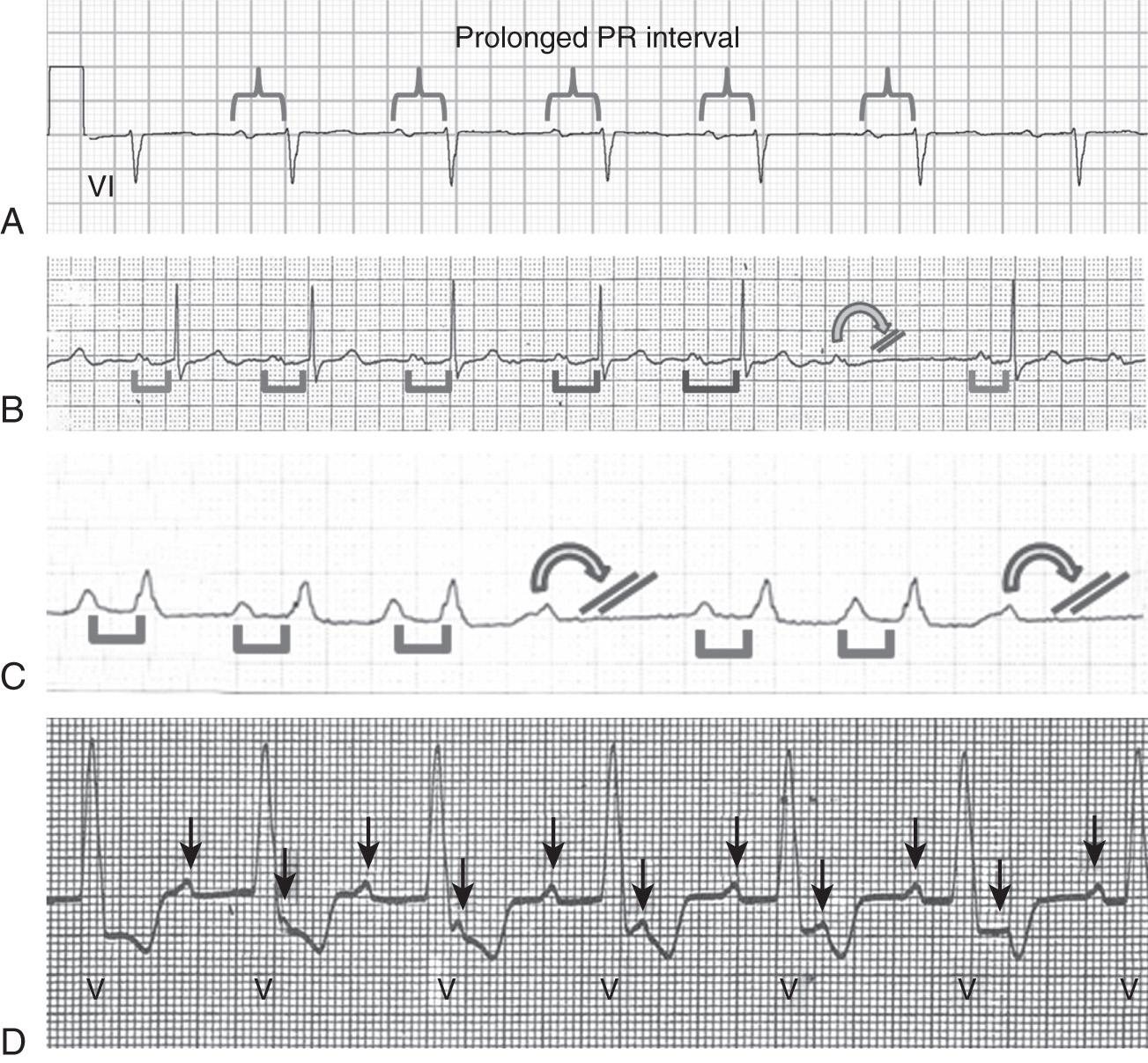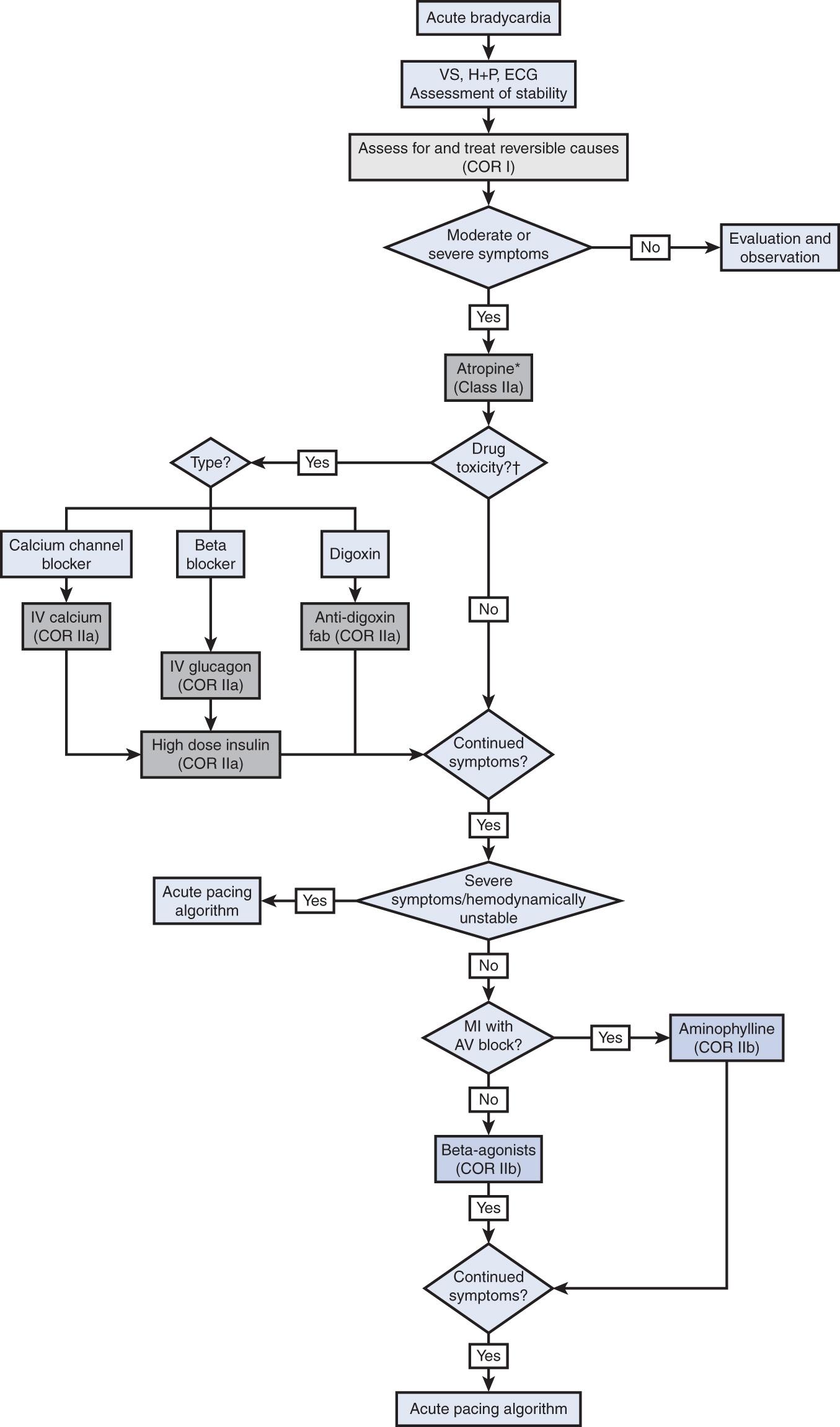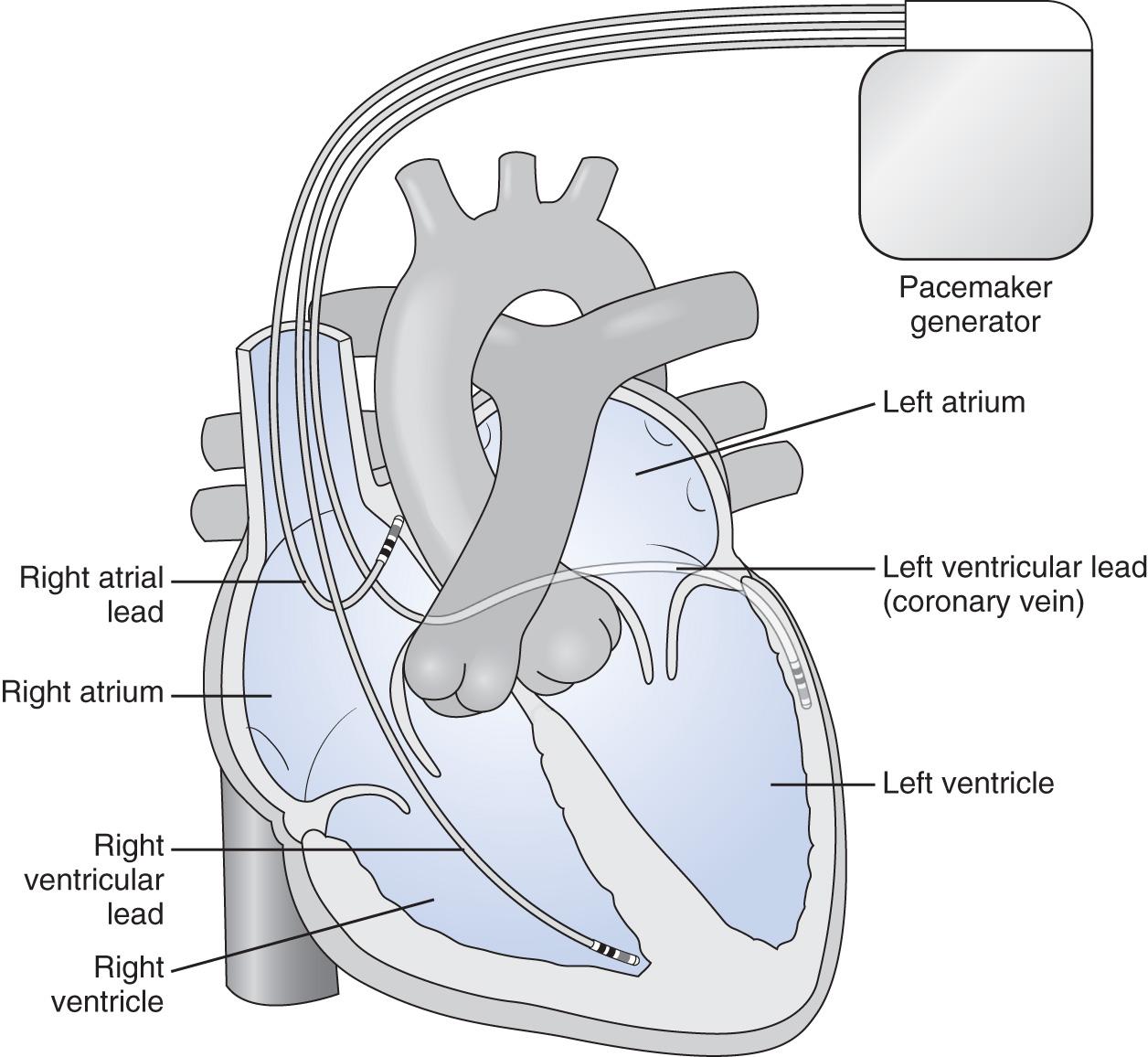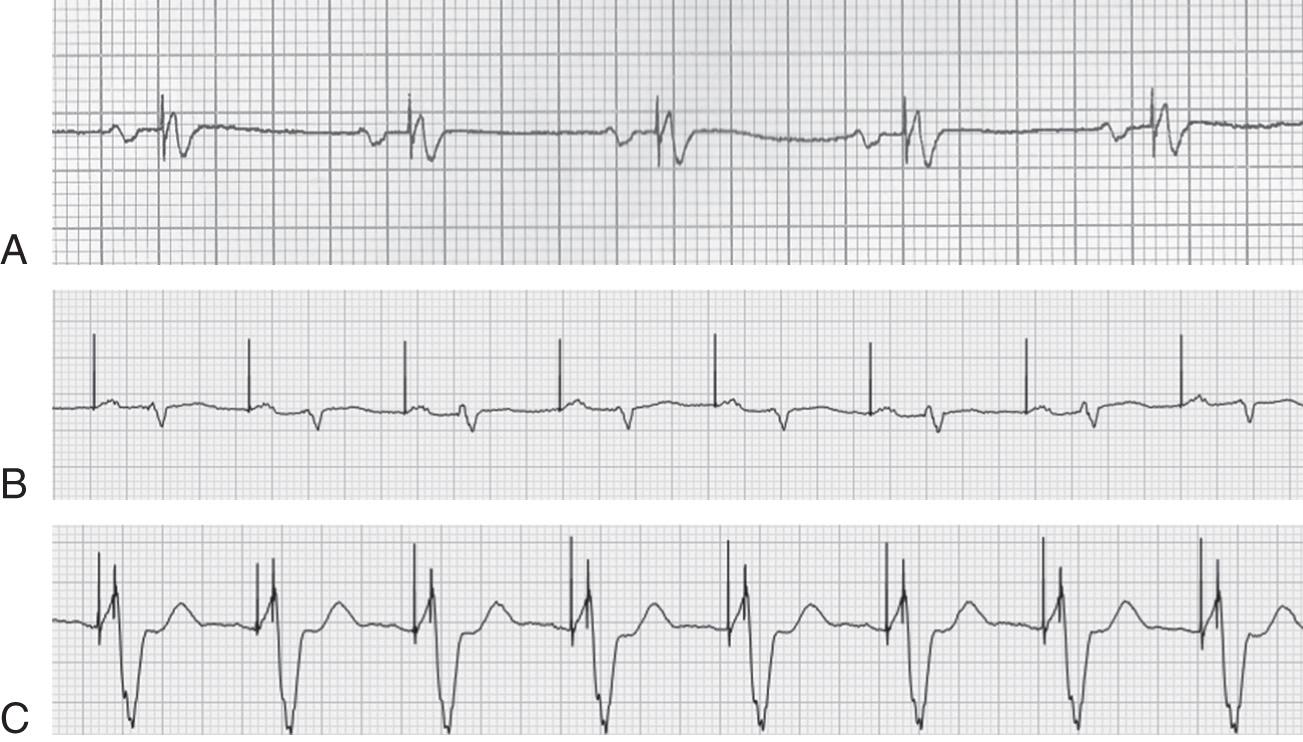Physical Address
304 North Cardinal St.
Dorchester Center, MA 02124
Sinus node dysfunction, commonly referred to as sick sinus syndrome, refers to a broad array of abnormalities of the sinus node, ranging from atrial impulse formation through propagation of the depolarization impulse. Sick sinus syndrome can manifest as sinus bradycardia, paroxysmal sinus arrest, sinus node exit block, or chronotropic insufficiency. Tachycardia-bradycardia (“tachy-brady”) syndrome is a common association between sick sinus syndrome and atrial fibrillation or atrial flutter.
Sick sinus syndrome is primarily a disease of the elderly and a common cause of bradyarrhythmias. The prevalence of sick sinus syndrome can range from 0% to 4.5% and accounts for approximately 40% to 60% of pacemaker implantations in the United States. Patients with sick sinus syndrome can be asymptomatic or have mild nonspecific symptoms, depending on the severity of the bradycardia or the duration of the pauses. If symptoms are present, usually they present for months or even years. Most commonly they include dizziness, near-syncope, recurrent falls and/or syncope, and exercise intolerance due to chronotropic incompetence may be present as well.
Sick sinus syndrome may be due to intrinsic causes such as replacement of nodal tissue with fibrous tissue at the sinus node itself, or it may be due to extrinsic causes like offending drugs, electrolyte imbalance, hypothermia, hypothyroidism, hypoxemia, increased intracranial pressure, sleep apnea, and excessive vagal tone. The use of a permanent pacemaker is usually the therapy of choice for symptomatic sick sinus syndrome, but first it is important to identify transient or reversible causes that could correct sick sinus syndrome. Pharmacological therapies with isoproterenol, terbutaline, or atropine are effective only as short-term solutions or in the case of an emergency.
Bradyarrhythmia can be caused by atrioventricular (AV) block. There are three degrees of AV block: first, second, and third (complete). This classification is based on the electrocardiogram (ECG).
First-degree block refers to a stable prolongation of the PR interval to more than 200 milliseconds and represents delays in conduction at the level of the AV node. There are no indications for pacing in isolated asymptomatic first-degree block except in situations of pseudopacemaker syndrome (see below).
Second-degree block is divided into two types. Mobitz type I (“Wenckebach”) exhibits progressive prolongation of the PR interval before an atrial impulse fails to stimulate the ventricle. Anatomically, this form of block occurs above the bundle of His. Type II exhibits no prolongation of the PR interval before a dropped beat and anatomically occurs at the level of the bundle of His or below. This rhythm may be associated with a prolonged QRS complex.
Third-degree or complete heart block defines the absence of AV conduction and refers to complete dissociation of the atrial and ventricular rhythms, with a ventricular rate less than the atrial rate. The width and rate of the ventricular escape rhythm helps to identify an anatomic location for the block: narrow QRS is associated with minimal slowing of the rate, generally at the AV node, and wide QRS is associated with considerable slowing of the rate at or below the bundle of His.
High-grade or advanced AV block refers to instances where more than one consecutive P wave fails to conduct through the AV node, regardless of the anatomical location. Permanent pacemaker implantation is indicated for third-degree and type II second-degree AV block at any anatomic level associated with bradycardia with symptoms.
Examples of first-, second-, and third-degree heart block are shown in Fig. 38.1 .

Numerous medications, including antihypertensive drugs, antiarrhythmic agents, psychoactive medications, and other drugs, can all worsen bradycardia and underlying conduction disorders. Drugs to consider in the evaluation of patients with bradycardia or conduction disorders are given in Table 38.1 .
| ANTIHYPERTENSIVE | ANTIARRHYTHMIC | PSYCHOACTIVE | OTHER |
|---|---|---|---|
|
|
|
|
Numerous systemic medical conditions can lead to bradycardia and heart block. As listed in the 2018 American College of Cardiology/American Heart Association/Heart Rhythm Society (ACC/AHA/HRS) guideline on the evaluation and management of patients with bradycardia and cardiac conduction delay, systemic conditions to consider include:
Infection/inflammation (Chagas’ disease, diphtheria, infectious endocarditis, Lyme disease, myocarditis, sarcoidosis, toxoplasmosis).
Infiltrative disorders (amyloidosis, hemochromatosis, lymphoma).
Rheumatological conditions (rheumatoid arthritis, scleroderma, systemic lupus erythematosus).
Metabolic (acidosis, hyperkalemia, hypokalemia, hypothermia, hypothyroidism, hypoxia).
Bifascicular block is located below the AV node and involves a combination of blocks at the level of the right bundle with blocks within one of the fascicles of the left bundle (left anterior or left posterior fascicle).
Trifascicular block refers to the presence of a prolonged PR interval in addition to a bifascicular block. Based on the surface ECG, it is impossible to tell whether the prolonged PR interval is due to delay at the AV node ( supra-Hisian ) or in the remaining conducting fascicle ( infra-Hisian , hence the term trifascicular block ).
Pacing is indicated when bifascicular or trifascicular block is associated with the following:
Complete heart block and symptomatic bradycardia.
Alternating bundle branch block.
Intermittent type II second-degree block with or without related symptoms.
Symptoms suggestive of bradycardia and an HV interval greater than 100 milliseconds on invasive electrophysiology study or evidence of infra-His block.
Neuromuscular disease such a muscular dystrophy or Erb dystrophy.
The 2018 ACC/AHA/HRS guideline on the evaluation and management of patients with bradycardia and cardiac conduction delay suggests the algorithm in Fig. 38.2 , which includes consideration of both medications and acute pacing.

Standard pacing systems consist of a pulse generator and pacing leads ( Fig. 38.3 ). The pulse generator is usually implanted in the left upper chest area. The pacing leads are implanted into the atria, the ventricles, or both, depending on the indication for pacemaker implantation.

Pacemakers function by providing an electrical stimulus resulting in cardiac depolarization during periods when intrinsic cardiac electrical activity is inappropriately slow or absent. The battery most commonly used in permanent pacers has a life span of 6 to 15 years.
The most important clinical criterion for permanent pacemaker implantation is the presence of symptoms that are clearly associated with the bradyarrhythmia, tachy-brady syndrome refractory to medical therapy, and/or chronotropic insufficiency. The clinical manifestations of symptomatic bradycardia include fatigue, dyspnea on exertion, decreased exercise tolerance, lightheadedness, dizziness, presyncope, and syncope.
Other indication for biventricular pacing is when symptoms of congestive heart failure (New York Heart Association [NYHA] class III to VI) are present with severe left ventricular (LV) dysfunction (ejection fraction [EF] <35%) and prolonged QRS (>120 milliseconds in cases of left bundle branch block [LBBB] and >150 milliseconds in cases of non-LBBB) or right ventricular pacing ( >40% ). Also known as cardiac resynchronization therapy. Newer procedures like direct His pacing and LBB pacing are promising alternative for cardiac pacing and resynchronization.
Examples of different types of pacing are shown in Fig. 38.4 .

There are a few clear indications for pacing in patients with bradycardia who are asymptomatic. These include:
Third-degree AV block with documented asystole lasting 3 or more seconds (in sinus rhythm, 5 seconds if in atrial fibrillation) or junctional or ventricular escape rates below 40 beats/min in patients while awake.
Third-degree AV block or second-degree AV Mobitz type II block in patients with chronic bifascicular and trifascicular block.
Congenital third-degree AV block with a wide QRS escape rhythm, ventricular dysfunction, or bradycardia markedly inappropriate for age.
Potential (class II) other indications for pacing in asymptomatic patients include the following:
Third-degree AV block with faster escape rates in patients who are awake.
Second-degree AV Mobitz type II block in patients without bifascicular or trifascicular block.
The finding in an electrophysiologic study of a block below or within the bundle of His or an HV interval of 100 milliseconds or longer.
Importantly, when bradycardia is present only during sleep, even if extreme, pacing is not indicated.
Become a Clinical Tree membership for Full access and enjoy Unlimited articles
If you are a member. Log in here